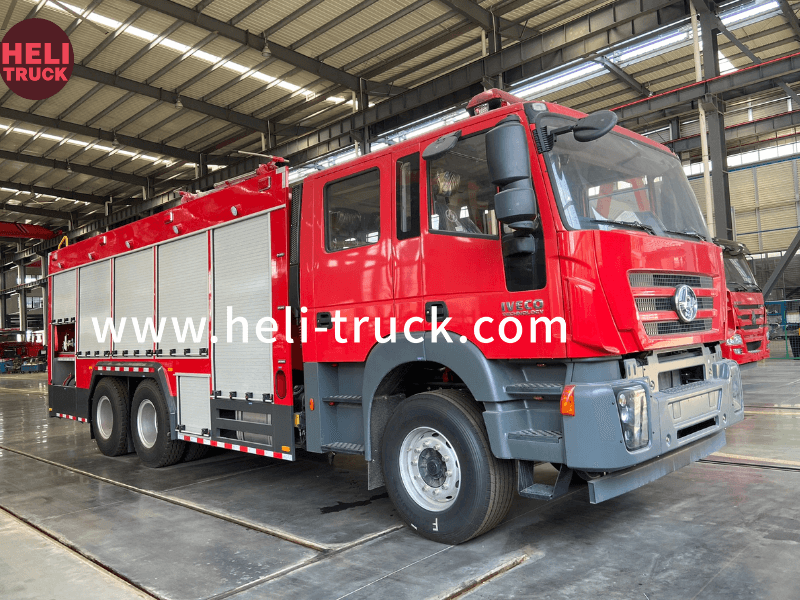Introduction
Vacuum trucks, also known as vacuum tankers or vacuum tank trucks, play a vital role in waste management and environmental protection. These specialized vehicles are designed to efficiently collect and transport various types of waste, including liquids, sludge, and solids. Vacuum trucks are commonly used in industries such as construction, oil and gas, municipal services, and environmental remediation.
This article will provide a comprehensive overview of vacuum truck waste containment, covering the types of waste handled, the technology and equipment used, the benefits of using vacuum trucks, and best practices for waste containment and disposal.
Types of Waste Handled by Vacuum Trucks
Vacuum trucks are versatile vehicles that can handle a wide range of waste materials. Some of the common types of waste collected by vacuum trucks include:
1. Liquid Waste: Vacuum trucks are often used to transport liquid waste, such as wastewater, sewage, and industrial effluent. The vacuum system in these trucks creates a vacuum that sucks up the liquid waste into the tank for transportation to a designated disposal site.
2. Sludge: Vacuum trucks are also equipped to handle sludge, which is a semi-solid material consisting of solids suspended in water. Sludge can be generated from various sources, including wastewater treatment plants, industrial processes, and environmental cleanup activities.
3. Solids: In addition to liquids and sludge, vacuum trucks can also collect solid waste materials, such as sand, gravel, and debris. The vacuum system in these trucks is designed to handle a wide range of particle sizes, making them suitable for cleaning up construction sites, industrial facilities, and roadways.
Technology and Equipment Used in Vacuum Trucks
Vacuum trucks are equipped with specialized technology and equipment to effectively collect, contain, and transport waste materials. Some of the key components of a vacuum truck include:
1. Vacuum System: The heart of a vacuum truck is its vacuum system, which consists of a powerful vacuum pump, suction hose, and storage tank. The vacuum pump creates suction that draws waste materials into the tank through the suction hose. The vacuum system is capable of generating high levels of vacuum pressure to efficiently collect waste from various sources.
2. Storage Tank: Vacuum trucks are equipped with a large storage tank that can hold a significant volume of waste material. The tank is typically made of durable materials such as steel or aluminum to withstand the demands of waste containment and transportation. The tank may also be divided into compartments to separate different types of waste.
3. Filtration System: To prevent contaminants from escaping into the environment, vacuum trucks are equipped with a filtration system that captures solid particles and prevents them from being released during transportation. The filtration system may consist of filters, screens, and other components that trap solids and prevent them from clogging the vacuum pump.
4. Discharge System: Once the waste material is collected, vacuum trucks are equipped with a discharge system that allows for the safe and efficient disposal of the waste at a designated site. The discharge system may include hoses, valves, and pumps that facilitate the transfer of waste from the storage tank to a treatment facility or disposal site.
Benefits of Using Vacuum Trucks for Waste Containment
There are several benefits to using vacuum trucks for waste containment, including:
1. Efficiency: Vacuum trucks are highly efficient in collecting and transporting waste materials, thanks to their powerful vacuum systems and large storage tanks. This efficiency helps to streamline waste management processes and reduce the time and labor required for waste containment.
2. Versatility: Vacuum trucks are versatile vehicles that can handle a wide range of waste materials, including liquids, sludge, and solids. This versatility makes them suitable for various industries and applications, from municipal services to industrial cleaning.
3. Environmental Protection: Vacuum trucks play a crucial role in environmental protection by containing and transporting waste materials in a safe and controlled manner. The filtration system in vacuum trucks helps to prevent contaminants from escaping into the environment, reducing the risk of pollution.
4. Cost-Effectiveness: Using vacuum trucks for waste containment can be cost-effective in the long run, as it helps to minimize the risk of spills, accidents, and environmental fines. By investing in efficient waste management solutions, companies can save money on cleanup and remediation costs.

Best Practices for Waste Containment and Disposal
To ensure the safe and effective containment of waste materials, it is important to follow best practices when using vacuum trucks. Some of the key best practices for waste containment and disposal include:
1. Proper Training: Operators of vacuum trucks should receive proper training on the safe and efficient operation of the vehicle, as well as the handling of different types of waste materials. Training programs should cover topics such as equipment operation, safety procedures, and environmental regulations.
2. Regular Maintenance: Vacuum trucks should undergo regular maintenance checks to ensure that all components are functioning properly. This includes inspecting the vacuum system, storage tank, filtration system, and discharge system for any signs of wear or damage.
3. Compliance with Regulations: It is essential to comply with local, state, and federal regulations governing the containment and disposal of waste materials. This includes obtaining the necessary permits, following proper waste handling procedures, and adhering to environmental protection guidelines.
4. Proper Disposal: Waste materials collected by vacuum trucks should be disposed of at approved treatment facilities or disposal sites. It is important to follow proper disposal protocols to prevent contamination of soil, water, and air.
https://www.heli-truck.com/water-tank-truck/ are essential vehicles for waste containment and environmental protection. These versatile vehicles are equipped with advanced technology and equipment to efficiently collect, contain, and transport various types of waste materials, including liquids, sludge, and solids. By following best practices for waste containment and disposal, companies can ensure the safe and effective management of waste materials while minimizing the impact on the environment. Vacuum trucks play a crucial role in promoting sustainable waste management practices and protecting our natural resources for future generations.
